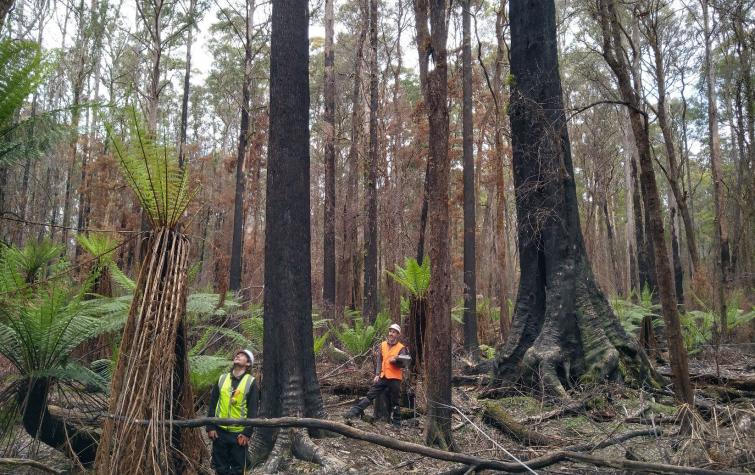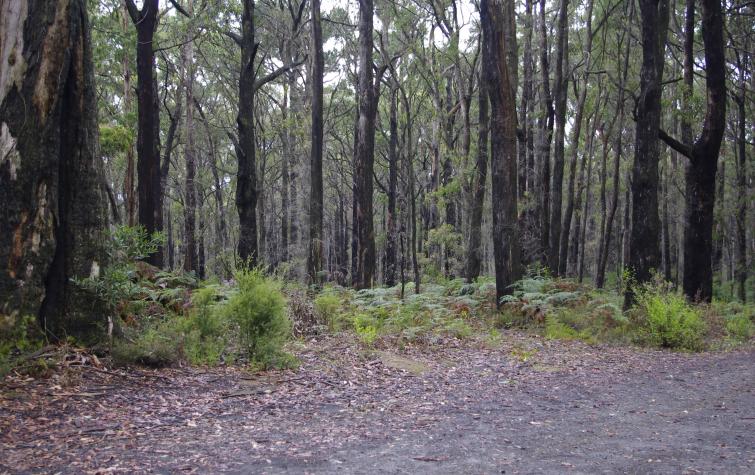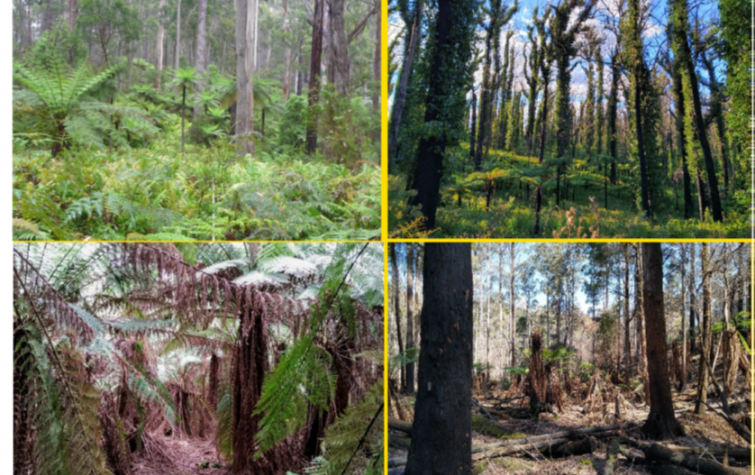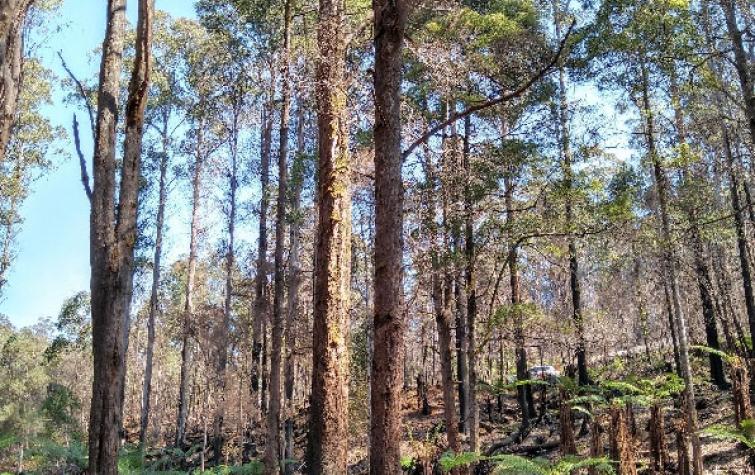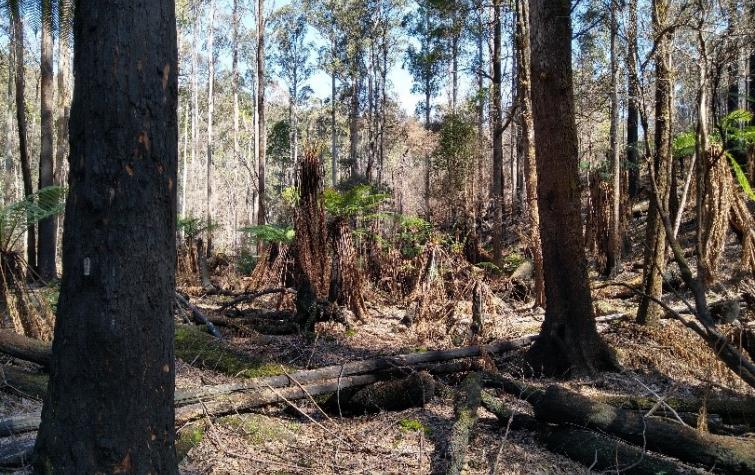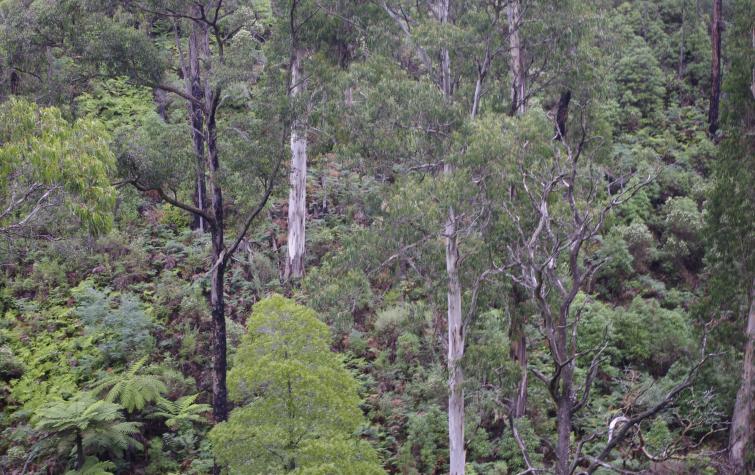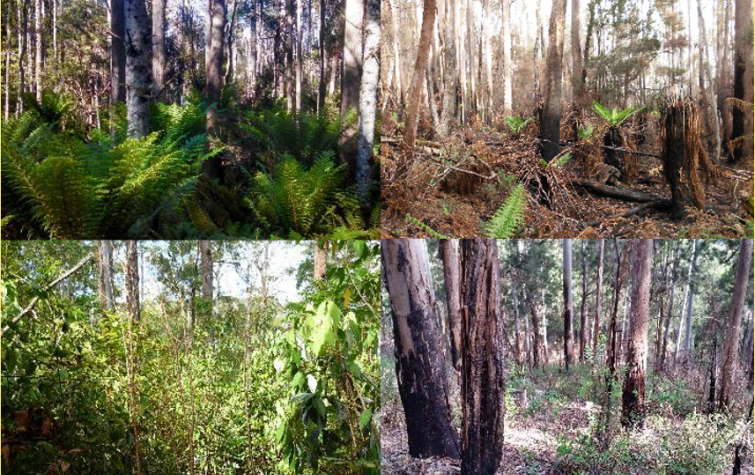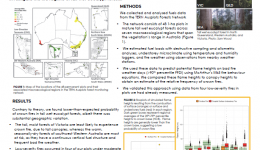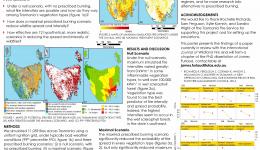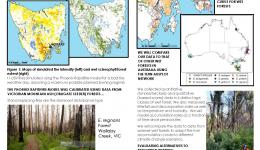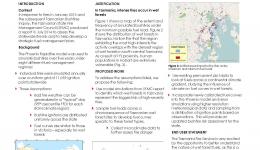Practical experience in Tasmania has shown that the PHOENIX RapidFire behaviour model – a dynamic, spatially and temporally explicit fire behaviour prediction model – is inappropriate for key Tasmanian vegetation types (tall wet eucalypt forests) that are ecologically different than their equivalents on the mainland of Australia (for which the fire prediction model was developed). Dr James Furlaud’s PhD improved the understanding of fuels and fire danger in Tasmania’s tall wet eucalypt forests, possibly Tasmania’s most dangerous vegetation type. James has collected data on vegetation in tall wet eucalypt forests both in Tasmania and nationwide. He has used this data to understand how fuel load, structure, and fire danger vary both geographically and temporally across this forest type. He has investigated different fire behaviour modelling approaches from around the world to develop a conceptual framework for modelling fire behaviour in this complex vegetation type.
James has also led three projects funded by the CRC’s funding for quick response program. He has completed immediate post-fire vegetation re-measurement of TERN plots burnt in the 2015/16 fire season, investigated the effects of fire at 12 permanent plots that burned in the 2019 Tasmanian fires, and is investigating the effect of fuel load and structure on fire severity across Australian wet eucalypt forests by measuring four of the eight plots in southern NSW that burned in the 2019/20 fires.
James has had his PhD research published in the Journal of Ecology, Landscape Ecology and the International Journal of Wildland Fire, and spoke at the International Association of Wildland Fire’s Fire Behaviour and Fuels conference in 2019. He is currently the Fire Centre Research Hub’s Communications Coordinator and research assistant for the School
of Natural Sciences at the University of Tasmania.
His thesis is available here.
Blog posts on Views & Visions
| Post | Date | Key Topics |
|---|---|---|
| A great opportunity to network with colleagues | 07 Nov 2016 | fire, fuel reduction |
Project leadership
Student project
Resources credited
| Type | Released | Title | Download | Key Topics |
|---|---|---|---|---|
| Presentation-Slideshow | 31 Oct 2017 | Three Minute Thesis: rethinking fuel accumulation curves |
|
environments, fire, risk management |
| Presentation-Audio-Video | 28 Oct 2016 | James Furlaud - Improving fire modelling for Tasmanian wet eucalypt forests |
|
fire impacts, fire severity, modelling |
| Presentation-Slideshow | 24 Oct 2016 | Wet forest fuels: managing Tasmania's most dangerous fuel type |
|
fire, fuel reduction, modelling |



